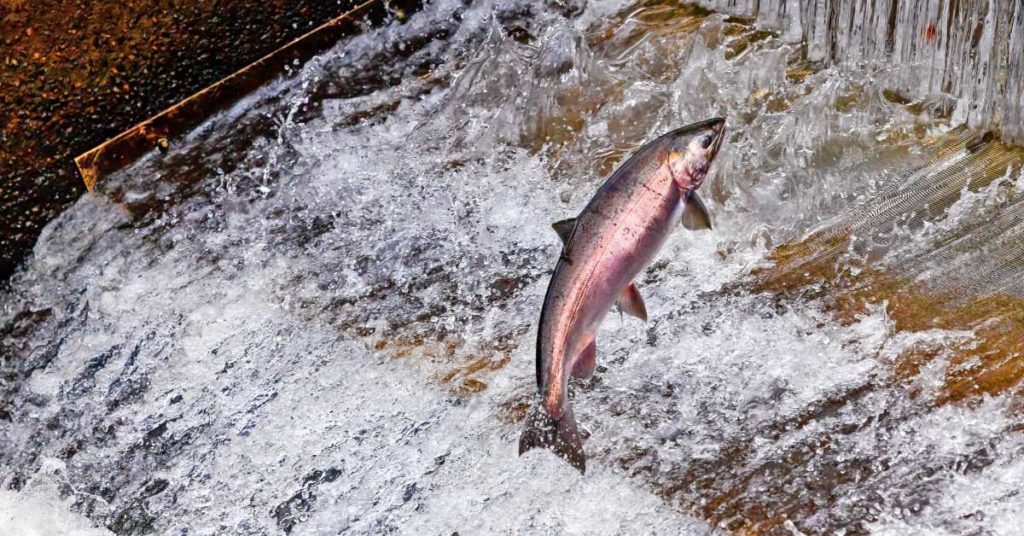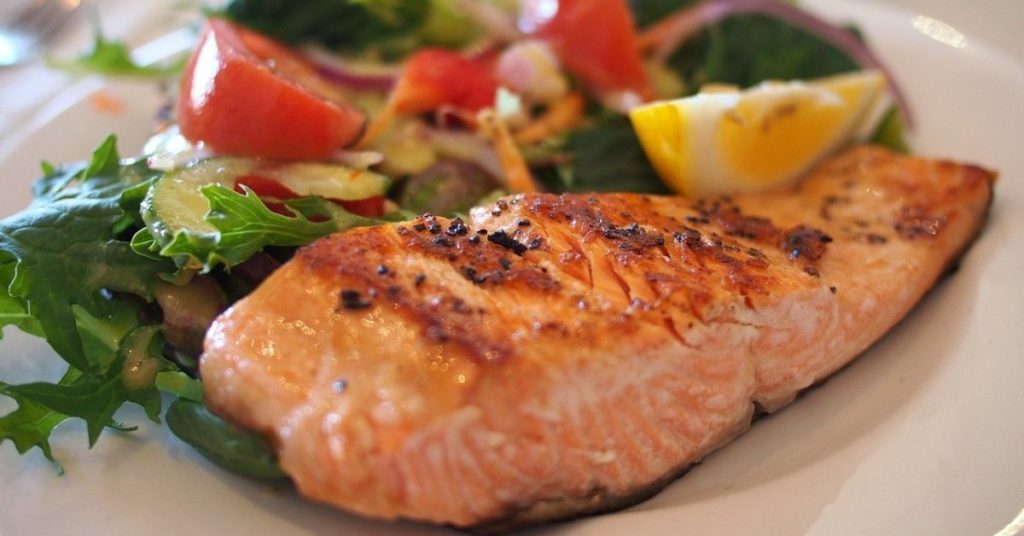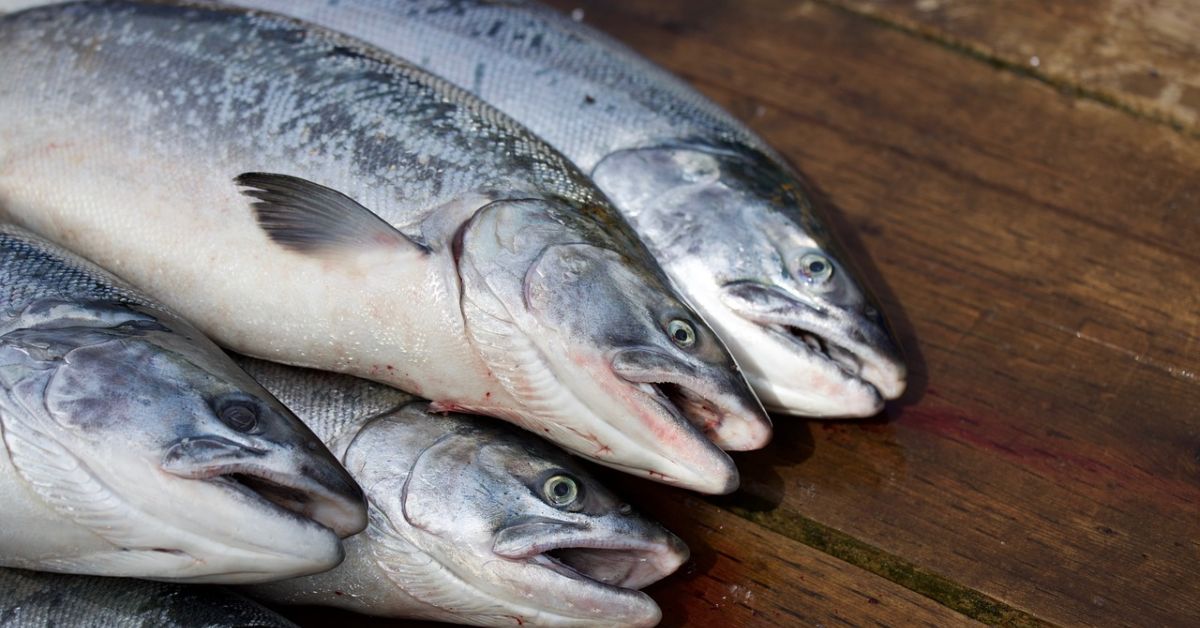The health benefits of eating wild salmon are well-known. Not only do they taste delicious, but their fatty acids and minerals can help with a number of ailments. Salmon is also known to be not as high in mercury compared to other types of fish, making it an ideal food for pregnant women or those worried about mercury levels in their diet.
When fresh, wild salmon contains an incredible amount of nutrients. Wild salmon is a great source of omega-3 fatty acids, which helps boost brain and heart health and may help protect against conditions like Alzheimer’s disease and skin cancer. Salmon is also high in B vitamins and protein, both of which are important for energy metabolism.
Many people wonder how wild salmon compares to farm-raised salmon. This article will discuss the different health benefits associated with each type of salmon as well as where it comes from.
Wild vs Farmed Salmon Health Benefits
When it comes to salmon, there are two main types: wild and farmed. Both offer a variety of health benefits, but there are some key differences that you should be aware of.

When choosing salmon, it is important to consider your personal health needs and preferences. If you are looking for a lower calorie and fat option, wild salmon is a good choice. If you are looking for a salmon option that is high in omega-3.
When it comes to salmon, there are two main types: wild and farmed. Both types of salmon offer a variety of health benefits, but there are some key differences between the two.
Wild salmon is typically higher in omega-3 fatty acids, which are known to promote heart health. Farmed salmon, on the other hand, is typically higher in vitamin D. Both wild and farmed salmon are good sources of protein, B vitamins, and selenium.
So, which type of salmon is better for you? Ultimately, the best type of salmon is the one that fits into your overall healthy diet. Both wild and farmed salmon offer a variety of benefits, so include a variety of both in your diet to reap the maximum health benefits.
The Omega-3 Fatty Acids in Salmon
Wild salmon is typically lower in calories and fat than farmed salmon. It is also a good source of omega-3 fatty acids, which are known to protect against heart disease and other chronic conditions. Farmed salmon is also a good source of omega-3 fatty acids, but it is higher in calories and fat. Farmed salmon may also contain higher levels of certain contaminants, such as mercury and pesticides.

Selenium in Salmon
Selenium is an essential trace element that provides numerous health benefits. Salmon is one of the best natural sources of selenium, and wild salmon contains more selenium than farmed salmon.
Some of the health benefits of selenium include reducing the risk of cancer, improving heart health, boosting cognitive function, and reducing the risk of autoimmune diseases. Selenium is also important for thyroid health and fertility.
Not only is salmon a great source of selenium, but it’s also a nutritious and delicious food. Wild salmon is a lean protein source that is also rich in omega-3 fatty acids, vitamin D, and B vitamins. Eating salmon regularly can help to improve your overall health and well-being.
Lower Mercury Content in Wild Salmon
Generally speaking, the larger fish — meaning, the higher on the food chain — the higher the mercury content. The only popular seafood options that are lower in mercury than salmon are anchovies, sardines, shrimp and scallops. Salmon mercury levels come out to approximately 0.022 parts per million, which is a lot lower than the levels found in apex predators like swordfish and shark.
Salmon: A Healthy Alternative to Meat and Poultry
As we’ve noted, this pink-fleshed fish is packed with nutrients like protein, omega-3 fatty acids, and vitamin D. Salmon is also a low-calorie food, making it a great option for those watching their weight.
Not only is salmon good for your health, but it is also a delicious and versatile ingredient. It can be grilled, baked, smoked, or even eaten raw. Salmon can be enjoyed as part of a healthy diet and is a great alternative to meat and poultry.
There are many health benefits of eating wild salmon, including its high omega-3 fatty acid content. But how much salmon should you eat each week to reap these benefits?
The American Heart Association (AHA) recommends that people eat two servings of fish per week, including at least one serving of oily fish like salmon. This will provide you with the recommended amount of omega-3 fatty acids.
How To Choose The Best Wild Salmon
When it comes to wild salmon, there are a few things you should look for to ensure you’re getting the best possible fish.
First, you want to make sure the fish is fresh. This means it should be caught within the last few days and should be kept chilled until you’re ready to cook it.
Second, you want to look for a fish that is bright pink in color and has firm flesh. This indicates that the fish is healthy and of good quality.
Finally, you want to make sure the fish has a clean, fresh smell. If it smells fishy, it’s probably not the best choice.
Choosing the best wild salmon is important because it will ensure you’re getting a delicious and healthy meal. But with a little know-how, it’s easy to find a great fish.
There are many different types of wild salmon, and each has its own unique flavor and texture. So how do you choose the best one for your needs?
Here are a few things to consider when choosing wild salmon:
- The type of fish: There are several different types of wild salmon, including Sockeye, Coho, and Chinook. Each type has its own unique flavor, so be sure to choose one that you’ll enjoy.
- The season: Wild salmon is typically in season from May to September. However, the peak season for each type of fish varies, so be sure to check when your favorite type of salmon is in season.
- The price: Wild salmon can be pricey, so be sure to check your budget before you buy.
Wild salmon is a popular fish, and for good reason. It is rich in omega-3 fatty acids and other nutrients. In addition to being delicious, it also has numerous health benefits. Every year, about 20 million salmon are raised in farms, which accounts for about 50% of the market. The rest of the market is made up of wild salmon.
Read also: Tuna vs Salmon: Which Fish Has More Health Benefits?
Health Benefits Of Eating Wild Salmon – Conclusion
Salmon is an excellent source of omega-3 fatty acids, which can help to lower blood pressure. Salmon is also rich in vitamin B12 and selenium. Both of these nutrients are important for heart health – it can help to lower blood pressure, reduce bad cholesterol levels, and lower oxidative stress in the body. Omega-3 fatty acids may also prevent plaque buildup in arteries. These fatty acids are essential to human health – however, they cannot be produced
When it comes to eating wild salmon, you have a lot of options. There are many health benefits to be had from this delicious fish. In this article, we’ve broken down the health benefits that come from eating wild salmon and how it can help improve your overall health.

